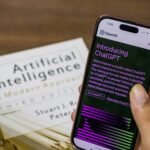Aging in place has become a preferred choice for many seniors, allowing them to maintain independence and remain in the comfort of their own homes. However, safety concerns often arise as loved ones age. Thanks to the advent of Internet of Things (IoT) devices, seniors and their families now have access to solutions that ensure safety, monitor health, and enhance quality of life. Below, we explore how IoT is transforming senior care.
Table of Contents
What Are IoT Devices and Why Are They Important for Senior Care?
IoT devices are internet-connected tools that collect, analyze, and share data to streamline and improve daily tasks. In senior care, these devices can enhance safety, enable remote monitoring, and promote well-being. With advanced sensors, real-time alerts, and AI-driven insights, IoT technology is revolutionizing aging in place by addressing challenges such as fall risks, medication management, and emergency response.
Key IoT Devices Transforming Senior Living
1. Fall Detection Systems
Falls are a leading concern for seniors, often resulting in injuries and hospitalization. IoT-enabled fall detection devices use sensors and accelerometers to detect sudden movements and alert caregivers or emergency services immediately. Examples include:

- Wearable Fall Detectors: These devices are worn as pendants or wristbands and automatically send alerts when a fall is detected.
- Smart Flooring Systems: Embedded with sensors, smart floors can detect abnormal movements or changes in weight distribution, notifying caregivers in real time.
2. Smart Home Assistants
IoT-powered home assistants like Amazon Alexa or Google Nest make daily tasks easier and safer for seniors. These devices can:
- Control smart lighting and appliances through voice commands.
- Provide medication reminders and health tips.
- Connect directly to family members or caregivers in case of emergencies.
3. Health Monitoring Devices
Managing chronic conditions is critical for senior health. IoT health monitors provide a way to track vital signs and share data with healthcare providers. Key devices include:
- Smart Blood Pressure Monitors: These devices track readings over time and send updates to medical professionals.
- Continuous Glucose Monitors (CGMs): Essential for seniors with diabetes, CGMs provide real-time glucose tracking and notifications for irregular levels.
4. Smart Medication Dispensers
Medication adherence can be a challenge for seniors, especially when multiple prescriptions are involved. Smart medication dispensers ensure proper dosage and timing by:
- Sending reminders via smartphone notifications.
- Automatically dispensing the correct dose at the right time.
- Alerting caregivers if a dose is missed.
5. GPS Trackers
For seniors with dementia or Alzheimer’s, GPS tracking devices offer peace of mind to families. These compact, wearable devices:
- Provide real-time location tracking.
- Send geofencing alerts if the senior wanders beyond a designated area.
Benefits of IoT Devices for Seniors
Enhanced Safety
IoT devices create a safer living environment by addressing key risks such as falls, fire hazards, and intrusions. Features like automatic door locking and smart smoke detectors further contribute to overall security.
Improved Health Outcomes
Continuous health monitoring allows early detection of potential issues, enabling timely intervention. Seniors can maintain better control of chronic conditions and enjoy improved overall health.
Reduced Caregiver Stress
IoT technology empowers caregivers by providing real-time updates and reducing the need for constant physical supervision. Families can monitor loved ones remotely, ensuring they remain safe while preserving their independence.
Challenges and Considerations
While IoT devices offer significant advantages, there are challenges to consider:
- Privacy Concerns: Collecting sensitive health data raises questions about security and data protection. Ensuring proper encryption and compliance with regulations like HIPAA is essential.
- Technical Complexity: Seniors may find it challenging to set up and use IoT devices. Simple interfaces and user-friendly designs are crucial for widespread adoption.
- Cost: Some IoT solutions may be expensive, creating barriers for low-income households. Subsidies or insurance coverage for such devices could bridge this gap.
Emerging Trends in IoT for Senior Care
1. AI Integration
The combination of AI and IoT enables predictive analytics, offering proactive care solutions. For instance, AI-powered health devices can predict the likelihood of falls or health complications based on historical data.
2. Voice-Activated Technology
Advancements in natural language processing make voice-activated IoT devices even more intuitive. Seniors can control devices, access information, and seek help without needing technical know-how.
3. Smart Wearables
Future wearables will integrate more sensors to track hydration levels, posture, and even emotional well-being. These devices will provide a holistic view of senior health.
How Families Can Start Using IoT Devices
Assess Needs
Identify the senior’s primary needs, such as mobility assistance, health monitoring, or security.
Research Options
Compare available devices and choose ones with strong reviews, reliable support, and easy installation.
Seek Expert Guidance
You can consult healthcare providers or geriatric specialists for recommendations on IoT solutions tailored to the senior’s conditions.
Provide Training
Help seniors understand how to use the devices effectively. A little patience and practice can go a long way in ensuring adoption.
The integration of IoT devices into senior care is a game-changer, offering a blend of safety, independence, and improved health outcomes. By embracing these technologies, seniors can continue to age in place with dignity and peace of mind, while families gain confidence in their loved one’s well-being.
Share this content:






